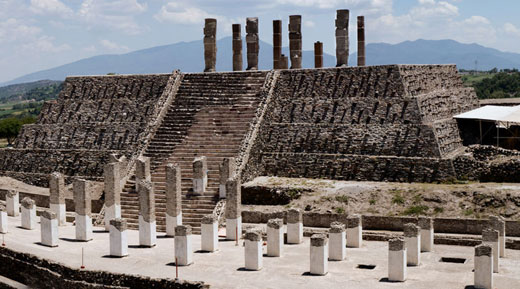by Sharon Salzberg: We cannot force ourselves to move on from a painful situation…

expecting forgiveness to be quick and voluntary can have negative effects. Explore this mindfulness practice for creating space for ourselves to forgive.
We’ve all heard the idiom “forgive and forget,” as if processing pain inflicted upon us by others is a quick and easy job. The phrase is an imperative and renders the idea of forgiveness compulsory; in order to heal, we must enter a state of denial and effectively avoid the pain that we have been experiencing.
But, of course, forgiveness is a process, an admittedly difficult one that often can feel like a rigorous spiritual practice. We cannot instantaneously force ourselves to forgive—and forgiveness happens at a different pace for everyone and is dependent on the particulars of any given situation. What we can do is create space for ourselves to forgive—and, perhaps ironically, part of that involves allowing ourselves to wrestle with our feelings of anger and pain to begin with. Once we are honest about our feelings, we can invite ourselves to consider alternative modes of viewing our pain and can see that releasing our grip on anger and resentment can actually be an act of self-compassion.
Accepting forgiveness as pluralistic and as an ongoing, individualized process opens us up to realize the role that our own needs play in conflict resolution.
Telling the story, acknowledging what has happened and how you feel, is often a necessary part of forgiveness. Without that, we live in an artificial reality that is frozen in time, and sometimes woven from fabrication. I have a friend who believes that a central reason for her divorce is that she spoke the truth after her ex-husband’s parents died and he waxed on about his perfect, idyllic childhood. “But you put your drunken parents to bed each night,” she would point out. “You dropped out of college to do that.” Her words undermined the story he was telling, and his need for a rosier past took precedence over the love between them. It also took precedence over his ability to forgive his parents, and the chance for love alongside the pain of his broken dreams.
At times, reality is love’s great challenge. When our old stories and dreams are shattered, our first instinct may be to resist, deny, or cling to the way things were. But if we loosen our grip, often what fills the space is a tender forgiveness and the potential for a new and different kind of love.
Helen Whitney, director of the documentary Forgiveness, has said, “We talk about forgiveness as if it were one thing. Instead, we should talk about forgivenesses. There are as many ways to forgive as there are people needing to be forgiven.” In other words, there are an incalculable—even infinite—number of situations in which we can practice forgiveness. Expecting it to be a singular action—motivated by the sheer imperative to move on and forget—can be more damaging than the original feelings of anger. Accepting forgiveness as pluralistic and as an ongoing, individualized process opens us up to realize the role that our own needs play in conflict resolution. We cannot simply “forgive and forget,” nor should we.
A Forgiveness Meditation
Meditating on forgiveness is not terribly different from a loving-kindness practice, as both invite us to be with our emotional states without judging them and to use the meditation as the anchor of our attention. These practices require courage, as we are not denying our suffering or the harmful actions we’ve taken.
Forgiveness demands presence, reminding us that we are not the same as the feelings we possess in a given situation, nor is the person who we’ve harmed or who has harmed us.
Forgiveness is not passive, but an active gesture of releasing feelings like anger, guilt, and resentment, all of which deplete us if we become lost in them. Forgiveness demands presence, reminding us that we are not the same as the feelings we possess in a given situation, nor is the person who we’ve harmed or who has harmed us.
Traditionally, the meditation is done in three parts:
- first, you ask forgiveness from those you have harmed;
- next, you extend forgiveness to those who have harmed you; and
- the final practice is that of self-forgiveness, for all of those times we harm ourselves with judgmental habits of mind.
1) Sit comfortably, and allow the breath to be natural. Begin by silently (or audibly) reciting phrases of forgiveness for those you have harmed. You may try, “If I have hurt or harmed anyone knowingly or unknowingly, I ask their forgiveness.”
2) Notice what comes up. You may find that offering forgiveness to one person may catalyze memories of another tough situation or person. Don’t push these feelings or thoughts away—but maintain your focus on the practice, and don’t get lost in guilt or self-blame about your distraction. As other thoughts arise, send your forgiveness in these new directions.
3) Next (after however long you want to spend on the first part of the reflection), you can begin to offer forgiveness to those who have harmed you: “If anyone has hurt or harmed me, knowingly or unknowingly, I forgive them.”
4) Once again, thinking about past painful experiences may trigger emotion. As these feelings, images, and memories bubble to the surface, you may simply recite, “I forgive you.”
5) Finally, we turn our attention to forgiveness of ourselves. Most of us have experienced self-blame—at work, in relationships, or simply because we have habitually kept ourselves in cycles of perfectionism. “For all of the ways I have hurt or harmed myself, knowingly or unknowingly, I offer forgiveness.”









































